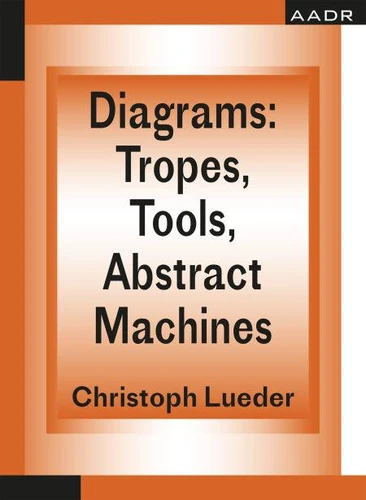Diagrams: Tropes, Tools, Abstract Machines
Par :Formats :
Disponible dans votre compte client Decitre ou Furet du Nord dès validation de votre commande. Le format ePub est :
- Compatible avec une lecture sur My Vivlio (smartphone, tablette, ordinateur)
- Compatible avec une lecture sur liseuses Vivlio
- Pour les liseuses autres que Vivlio, vous devez utiliser le logiciel Adobe Digital Edition. Non compatible avec la lecture sur les liseuses Kindle, Remarkable et Sony
 , qui est-ce ?
, qui est-ce ?Notre partenaire de plateforme de lecture numérique où vous retrouverez l'ensemble de vos ebooks gratuitement
Pour en savoir plus sur nos ebooks, consultez notre aide en ligne ici
- Nombre de pages240
- FormatePub
- ISBN978-3-88778-921-3
- EAN9783887789213
- Date de parution04/11/2020
- Protection num.Digital Watermarking
- Taille17 Mo
- Infos supplémentairesepub
- ÉditeurAADR – Art Architecture Design
Résumé
Diagrams: Tropes, Tools and Abstract Machines examines the pervasive roles of diagrams as analytical, generative, narrative and critical devices manifest in design practices by architects and non-architects that draw on thick cultural milieus and that operate at personal, architectural and urban scales. What are potentials of diagrams beyond representation, as situated cultural practices, corporeal engagement and choreographic script, as instruments of speculation and invention, as manifestation of ideas and incrimination of ideology, as abstract machines in scenarios of allopoïesis, autopoïesis and cosmopoïesis?
Diagrams: Tropes, Tools and Abstract Machines examines the pervasive roles of diagrams as analytical, generative, narrative and critical devices manifest in design practices by architects and non-architects that draw on thick cultural milieus and that operate at personal, architectural and urban scales. What are potentials of diagrams beyond representation, as situated cultural practices, corporeal engagement and choreographic script, as instruments of speculation and invention, as manifestation of ideas and incrimination of ideology, as abstract machines in scenarios of allopoïesis, autopoïesis and cosmopoïesis?



